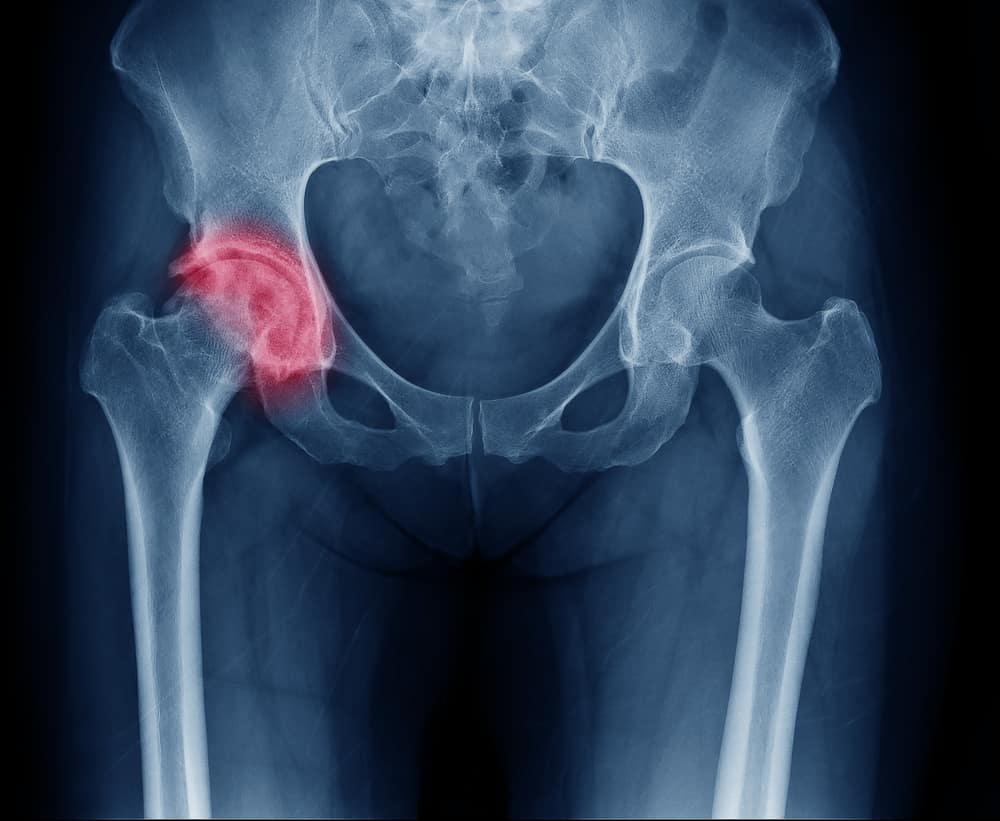Timings
Evercare Hospital Lahore
- Monday - Thursday (11 am - 01 pm)(07 pm - 09 pm)
- Friday (02 pm - 05 pm)(07 pm - 09 pm)
- Saturday (04 pm - 06 pm)
Contact Info
- Phone: 03060603646
- Whatsapp: 03060603646
- Email: Info@drwaqasjavedorthopedics.com
Hip Injuries

Our hips play a crucial role in our daily lives, supporting our body weight and allowing us to walk, run, and perform various movements. When a hip injury occurs, it can significantly impact our quality of life, affecting our mobility and ability to perform routine tasks. Understanding hip injuries and their proper treatment is essential for maintaining an active and pain-free lifestyle.
Common Hip Injuries and Their Causes
Hip injuries can range from mild strains to severe fractures. Some of the most common hip injuries include:
- Hip flexor strains
- Labral tears
- Hip bursitis
- Hip impingement (femoroacetabular impingement)
- Hip fractures
- Osteoarthritis of the hip
These injuries can be caused by various factors, including:
– Sports activities (especially in high-impact sports)
– Overuse or repetitive motions
– Falls or accidents
– Age-related wear and tear
– Underlying medical conditions
Hip Injury Healing Time: What to Expect
The healing time for hip injuries can vary significantly depending on the type and severity of the injury. Here’s a general overview of hip injury healing times:
– Mild strains or sprains: 2-6 weeks
– Moderate soft tissue injuries: 6-12 weeks
– Severe soft tissue injuries or fractures: 3-6 months or longer
It’s important to note that these are general estimates, and individual recovery times may vary. Factors such as age, overall health, and adherence to treatment plans can all influence healing time.
Soft Tissue Injury Hip:
Soft tissue injuries in the hip involve damage to muscles, tendons, or ligaments surrounding the hip joint. These injuries are common in sports and can also occur due to overuse or sudden movements. Some examples of soft tissue hip injuries include:
– Hip flexor strains
– Groin strains
– Hamstring strains
– IT band syndrome
Treatment for soft tissue hip injuries typically involves:
- Rest and activity modification
- Ice and heat therapy
- Physical therapy exercises
- Pain management techniques
- Gradual return to activities
In some cases, more advanced treatments such as platelet-rich plasma (PRP) injections or stem cell therapy may be recommended to promote healing and reduce recovery time.
Hip Injuries in Sports:
Athletes are particularly susceptible to hip injuries due to the high-impact nature of many sports. Common hip injuries in sports include:
- Labral tears
- Hip impingement
- Sports hernias
- Muscle strains
Preventing hip injuries in sports involves:
– Proper warm-up and cool-down routines
– Strengthening exercises for hip and core muscles
– Maintaining flexibility through stretching
– Using appropriate equipment and techniques
– Gradually increasing training intensity
For athletes dealing with hip injuries, a comprehensive treatment plan is crucial for a successful return to sport. This often includes:
– Accurate diagnosis through imaging studies (MRI, CT scan)
– Customized rehabilitation programs
– Sport-specific training
– Gradual return-to-play protocols
Recent Advancements in Hip Injury Treatment
The field of orthopedics has seen significant advancements in recent years, particularly in the treatment of hip injuries. Some notable developments include:
- Minimally invasive surgical techniques
- Advanced imaging technologies for more accurate diagnoses
- Improved implant materials and designs for hip replacements
- Regenerative medicine approaches (stem cell therapy, PRP injections)
- Computer-assisted surgery for enhanced precision
These advancements have led to better outcomes, faster recovery times, and improved long-term results for patients with hip injuries.
Hip Surgery in Pakistan: Statistics and Outcomes
While comprehensive national statistics on hip surgeries in Pakistan are limited, data from individual hospitals and surgeons provide insights into the current state of hip surgery in the country:
– A study conducted at a major hospital in Karachi reported a success rate of 92% for total hip replacements over a 5-year period.
– The average age of patients undergoing hip replacement surgery in Pakistan is 58 years, lower than the global average of 65 years.
– Osteoarthritis remains the leading cause of hip replacements in Pakistan, accounting for approximately 70% of cases.
– The number of hip arthroscopy procedures performed in Pakistan has increased by 35% over the past five years, reflecting the growing adoption of minimally invasive techniques.
Traditional vs. Advanced Hip Surgery Techniques
Comparing traditional open surgery with advanced minimally invasive techniques for hip injuries:
Traditional Open Surgery:
– Larger incisions (10-12 inches)
– Longer hospital stays (5-7 days)
– Extended recovery time (3-6 months)
– Higher risk of complications
Advanced Minimally Invasive Techniques:
– Smaller incisions (2-4 inches)
– Shorter hospital stays (2-3 days)
– Faster recovery time (6-8 weeks)
– Lower risk of complications
– Less blood loss and postoperative pain
Benefits for Pakistani Patients
The advancements in hip injury treatment offer numerous benefits for Pakistani patients:
- Reduced hospital stays, leading to lower overall treatment costs
- Faster return to work and daily activities
- Improved long-term outcomes and implant longevity
- Lower risk of complications and infections
- Better pain management and reduced reliance on pain medications
- Increased accessibility to advanced treatments, even in smaller cities
Addressing Common Concerns About Hip Surgery
Many patients have concerns about undergoing hip surgery. Here are some common misconceptions addressed:
Myth: Hip surgery is only for the elderly.
Fact: While hip replacements are common in older adults, hip surgeries can benefit patients of all ages, depending on their condition.
Myth: Recovery from hip surgery takes many months.
Fact: With modern techniques, many patients can return to light activities within 4-6 weeks.
Myth: Hip implants only last a few years.
Fact: Modern hip implants can last 15-20 years or more with proper care.
Myth: Hip surgery always requires a long hospital stay.
Fact: Many hip procedures are now performed on an outpatient basis or with minimal hospital stays.
Dr. Waqas Javed’s Expertise in Hip Surgery
As a consultant orthopedic surgeon specializing in hip injuries, I have extensive experience in both traditional and advanced hip surgery techniques. My expertise includes:
– Minimally invasive hip replacements
– Hip arthroscopy for labral repairs and FAI treatment
– Revision hip surgeries
– Complex trauma cases involving hip fractures
I stay updated with the latest advancements in the field through regular participation in international conferences and workshops. My goal is to provide the best possible outcomes for my patients using the most appropriate and advanced techniques available.
Patient Success Stories
Here are two anonymized case studies illustrating successful outcomes:
Case 1: A 45-year-old male athlete with a labral tear
– Underwent arthroscopic labral repair
– Returned to competitive sports within 6 months
– Reported 95% improvement in pain and function
Case 2: A 62-year-old female with severe hip osteoarthritis
– Underwent minimally invasive total hip replacement
– Discharged from the hospital after 2 days
– Resumed normal daily activities within 6 weeks
– Reported complete pain relief and improved mobility
Post-operative Care and Rehabilitation
Proper post-operative care and rehabilitation are crucial for optimal recovery from hip injuries. In the Pakistani healthcare context, we focus on:
- Early mobilization and weight-bearing as tolerated
- Customized physical therapy programs
- Pain management techniques suitable for local healthcare resources
- Regular follow-up appointments to monitor progress
- Patient education on home exercises and activity modifications
- Nutritional guidance to support healing and recovery
The Future of Hip Surgery in Pakistan
The future of hip surgery in Pakistan looks promising, with several developments on the horizon:
- Increased adoption of robotic-assisted surgery for enhanced precision
- Greater availability of advanced implant materials, including ceramic-on-ceramic bearings
- Expansion of telemedicine services for remote consultations and follow-ups
- Integration of artificial intelligence in surgical planning and outcome prediction
- Enhanced focus on preventive care and early intervention for hip conditions
As we continue to advance in the field of orthopedics, Pakistani patients can look forward to even better outcomes, faster recoveries, and improved quality of life following hip injuries and surgeries.
Find Out Answers Here
Most patients can resume light activities within 4-6 weeks, with full recovery typically occurring within 3-6 months.
Yes, hip arthroscopy is available at several major hospitals in Pakistan, including our facility in Lahore.
The success rate for hip replacement surgery in Pakistan is around 90-95%, comparable to international standards.
Proper warm-up, strength training, flexibility exercises, and using correct techniques can help prevent hip injuries in sports.
Yes, many hip conditions can be managed with conservative treatments such as physical therapy, medications, and lifestyle modifications before considering surgery.
REFERENCES
1. Ahmad, I., et al. (2020). "Outcomes of Total Hip Replacement in a Tertiary Care Hospital in Pakistan." Journal of Pakistan Orthopaedic Association, 32(1), 22-28.
2. Khan, M. S., et al. (2019). "Hip Arthroscopy: A Growing Field in Pakistani Orthopedics." Pakistan Journal of Surgery, 35(2), 105-110.
3. Younus, M., et al. (2018). "Epidemiology of Hip Fractures in Pakistan: A Retrospective Study." Osteoporosis International, 29(1), 195-201.

Conditions I Treat

- Knee Injuries
- Orthopedic Infections
- PCL Injuries
- Multi-ligament Injuries
- Joint Replacement
- Kneecap Dislocations
- Knee Replacement
- Sport Injuries of Knee
- Lower Limb Fractures
- Hip Injuries
- Hip Replacement
- Back Pain
- Shoulder, Elbow, Wrist
- Upper Limb Fractures
- Neck Pain